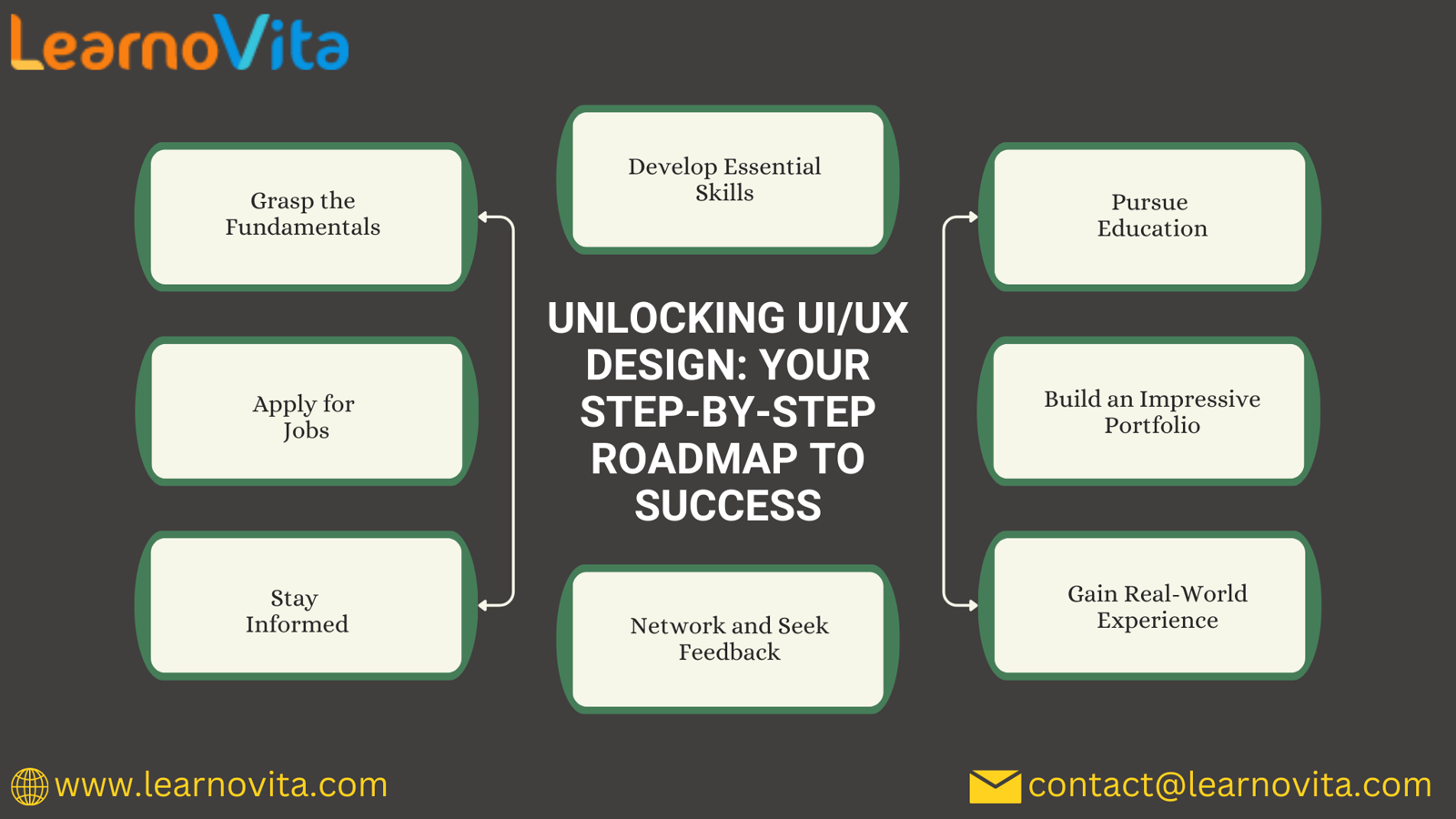Unlocking UI/UX Design: Your Step-by-Step Roadmap to Success
Embarking on a journey to become a UI/UX designer can be both thrilling and challenging. With the right guidance, you can unlock your potential and pave the way to a rewarding career. This roadmap outlines the essential steps you need to take to succeed in the world of UI/UX design. If you want to excel in this career path, then it is recommended that you upgrade your skills and knowledge regularly with the latest UI UX Design Online Course.

Step 1: Grasp the Fundamentals
Understanding UI and UX
- UI (User Interface) focuses on the aesthetic elements of a product, including buttons, icons, and layout.
- UX (User Experience) is about the overall experience users have while interacting with a product, emphasizing usability and satisfaction.
Key Terminology
Familiarize yourself with terms like wireframes, user personas, usability testing, and user journeys. This vocabulary will be essential as you dive deeper into the field.
Step 2: Develop Essential Skills
Design Tools
Mastering industry-standard design tools is crucial. Here are a few you should consider:
- Figma: Great for collaborative design and prototyping.
- Adobe XD: Offers robust features for UI design and prototyping.
- Sketch: A popular choice among UI designers for its vector-based design capabilities.
Core Competencies
Focus on developing the following skills:
- Visual Design: Understand color theory, typography, and layout principles.
- Interaction Design: Learn how to create intuitive interactions that enhance user experience.
- Research Skills: Get comfortable with conducting user interviews, surveys, and usability tests.
Step 3: Pursue Education
Formal Education
While a degree in design or a related field can be beneficial, it’s not mandatory. Many successful UI/UX designers are self-taught.
Online Learning Resources
Consider enrolling in online courses on platforms like Coursera, Udemy, or Skillshare. Look for courses that offer hands-on projects to apply what you learn.
Step 4: Build an Impressive Portfolio
Create Diverse Projects
Start building your portfolio by working on personal projects or redesigning existing websites and apps. Aim for a variety of styles and problems to showcase your versatility.
Highlight Your Process
Include case studies in your portfolio that explain your design process, challenges faced, and how you solved them. This demonstrates your critical thinking and problem-solving abilities.
Step 5: Gain Real-World Experience
Internships
Seek internships to gain valuable experience. Even unpaid positions can provide insights into the industry and help you build connections.
Freelance Work
Consider freelancing to broaden your experience. This can also help you refine your skills while adding more projects to your portfolio.

With the aid of Best Software Training Institute programs, which offer comprehensive training and job placement support to anyone looking to develop their talents, it’s easier to learn this tool and advance your career.
Step 6: Network and Seek Feedback
Connect with the Community
Join design forums, attend local meetups, and engage with online communities. Networking can lead to job opportunities and valuable insights.
Request Constructive Criticism
Share your work with peers and mentors to receive feedback. Learning from others can significantly improve your skills and approach.
Step 7: Stay Informed
Follow Trends
UI/UX design is constantly evolving. Stay updated on the latest trends, tools, and best practices by following design blogs, podcasts, and social media accounts.
Embrace Lifelong Learning
Always seek opportunities to enhance your skills. Attend workshops, webinars, and conferences to deepen your understanding of the field.
Step 8: Apply for Jobs
Tailor Your Resume
Craft a resume that highlights your skills, experience, and unique projects. Ensure your portfolio is easily accessible and showcases your best work.
Prepare for Interviews
Practice discussing your design process and presenting your projects. Be ready for design challenges that may come up during interviews.
Conclusion
Unlocking a career in UI/UX design requires dedication, creativity, and a willingness to learn. By following this roadmap, you can navigate your way to success in this dynamic and fulfilling field. Start your journey today, and remember that every designer’s path is unique—embrace yours!
- Art
- Causes
- Crafts
- Dance
- Drinks
- Film
- Fitness
- Food
- Oyunlar
- Gardening
- Health
- Home
- Literature
- Music
- Networking
- Other
- Party
- Religion
- Shopping
- Sports
- Theater
- Wellness



